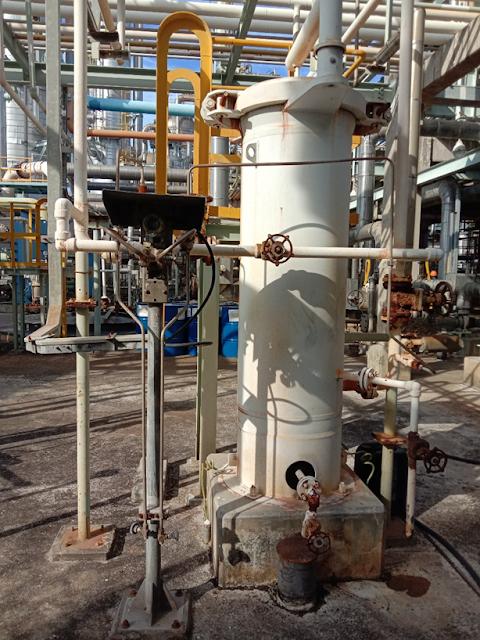How Does A Knockout Drum Work
In industry, the process of separating and cleaning gas streams from contaminants and liquids is an important stage in maintaining the smooth operation and safety of equipment. One of the key devices that perform this important task is the knockout drum. In this article, we will understand what a knockout drum is, why it is so important, how it works, and its key components.
What is a Knockout Drum?
A knockout drum is a tank or
container specifically designed to remove solid particles, liquid vapors, and
liquids from a gas stream. The name "knockout" refers to the physical
process in which particles or condensed liquids are "kicked" or
"ejected" from the gas stream. These devices are used extensively in
a variety of industries, including oil and gas, petrochemicals, power
generation, and more.
The function of Knockout Drum
The primary function of a
knockout drum is to clean the gas stream of contaminants that can damage
equipment or reduce product quality. Knockout drums also protect more sensitive
downstream equipment from damage caused by contaminants such as solid particles
or liquids.
How Knockout Drum Works
Knockout drums function by
removing contaminants from the gas stream. First, the gas stream containing
contaminants enters the knockout drum through the intake pipe. As the gas
enters the drum, its velocity is abruptly reduced, causing contaminants such as
solid particles or liquid vapors to become heavier. Inside the drum, separation
occurs between the gas phase and the liquid phase. The heavier solid particles
or liquids separate and fall to the bottom of the drum. Subsequently, the
separated liquid is discharged from the bottom of the drum through the liquid
discharge pipe, while the gas that has been cleaned of contaminants is
discharged from the top of the drum through the gas discharge pipe. In this
way, the knockout drum cleans the gas of impurities and keeps the gas used in
industrial processes cleaner and safer.
Components of a Knockout Drum
Shell (Drum Body): This is the
main body of the knockout drum, tubular or spherical. The shell is where the
main phase separation occurs.
Mist Extractor. A mist
extractor is a component that helps separate liquid vapor or fine particles
from the gas stream.
Liquid Outlet. The liquid
separated from the gas stream is removed through the liquid outlet pipe at the
bottom of the knockout drum.
Gas Outlet. Clean gas that
has gone through the separation process is removed through the gas outlet pipe
at the top of the knockout drum.
Level Control. Level
control is a device that monitors and regulates the liquid level in the
knockout drum.
Pressure Relief. A
pressure relief is used to protect the knockout drum from overpressure.
Manhole. A manhole is an
inspection hole that allows access into the drum for maintenance and cleaning.
Supports. Knockout drum
must be supported by strong supports to maintain its stability.
Drain. A drain is used to
discharge the liquid collected at the bottom of the knockout drum.
Conclusion
Knockout drums are key components in industries that require gas and liquid separation. Its proper use helps ensure that the gas stream is clean of contaminants that could damage equipment or products. Therefore, knockout drums are important devices that help maintain smooth industrial operations and protect company assets. Thus, its role in the industrial world is indispensable. With a better understanding of knockout drums, we can appreciate the importance of these devices in keeping industrial processes running smoothly.


